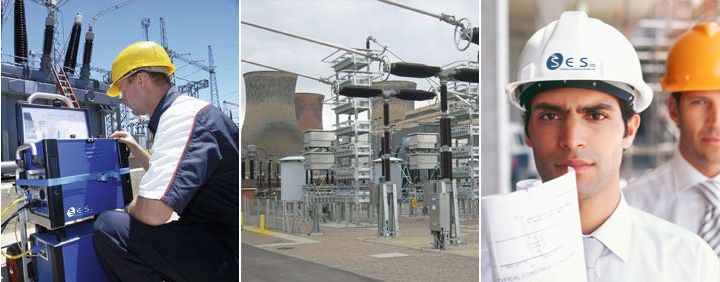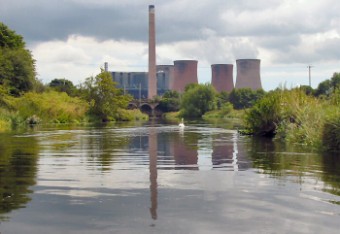
Apprentice Visits Rugeley Powerstation
June, 2009
My recent trip to Rugeley power station on the 27th may was very interesting, it helped give a much broader view of how the power is generated before entering the distribution network.
The size and the scale of the equipment used if fascinating, everything has been supersized, for example the motors powering fans the force air into the furnaces run on 33Kv and are easily the size of an average family saloon. The furnace has two sides, side A and side B, and stands over 187 feet tall.
Coal is mainly delivered by large freight trains carrying 2 or more carriages, as this is more economic and efficient because the carriages can be loaded and unloaded easily compared to road transport. The trains arrive with 20 or more carriages and go through an unloading station, as the train slowly drives through, there are special catches on the track so that when a container goes through an arm on the carriage moves and causes the bottom of the container to open letting all the coal fall down through a grating into an underground bunker, where it is transported to the furnace or to the main stockpile via a system of conveyor belts. Each container holds 72 tons of coal, this may sound a lot but when the furnaces are fully operational, this amount of coal can last up to just 15 minutes.
Inside the main structure which houses the furnace, there are many floors, from ground level up to 187 feet. A remarkable thing is that the floors entirely consist of metal lattice, which means u can see right the way through to the bottom floor from the top, which to some may seem both unsafe and uncomforting, but in fact is designed for safety. In the event of a fire or explosion, there would be no pressure build up in a certain area which could usually; blow floors apart, blast a whole in a supporting wall or even take out support beams or part of the furnaces, coal grinders, high pressure steam pipes etc. leading to even greater damage. Instead it is more open, enabling pressure from an explosion to disperse and vent.
The power station currently uses two types of coal, Russian and Indonesian, Indonesian coal is more volatile and identified by its slight brown tinge compared to the black Russian coal. British coal is not used due to its high sulphur content it would not pass emotions regulations.
It is a very common misconception that coal power stations are dirty and that they are a big cause of pollution, during this trip I found that this is not the case. The power station does everything possible to reduce emissions and the release of harmful substances into the environment, and they even have uses for a lot of the waste products produced. A good example of this is that the ash left over from burning the powderised coal is collected and turned into breeze blocks and the foundations for roads. One form of emissions control that the plant employs are two (one for each side of the furnace) huge pieces of machinery called “precipitators”. The waste gases from the furnaces are fed and distributed evenly around 6 enormous metal plates which are charged with 11kV this attracts a lot of the dust and other ionized particles and pollutants as the flow past. When the plates are “full” a large hammer swings down and hits the plates which knocks off the particles and dust which fall and is collected at the bottom, this is then processed and again goes into making parts of a road surface.
The newest piece of equipment at the power station is the recently commissioned FGD machinery and tower. FGD stands for Flue-Gas Desulpherisation, and is used to remove SO2 from the exhaust flue gasses. SO2 or sulphur dioxide is responsible for acid rain. The FGD works by passing the gasses (after the precipitator) through a shower of alkaline sorbent, usually limestone or lime. Then the following reaction occurs;
Ca(OH)2 (solid) + SO2 (gas) → CaSO3 (solid) + H2O (liquid)
The CaSO3 (calcium sulphite) is then further oxidized and the outcome is gypsum, which is sold as the main ingredient in plasterboard. This again reduces waste products and also helps offset the costs of the machinery.
It was very impressive to see how much effort and technology goes into reducing pollution and minimizing the waste products with the overall goal of protective our environment and still generating 1mega watt.